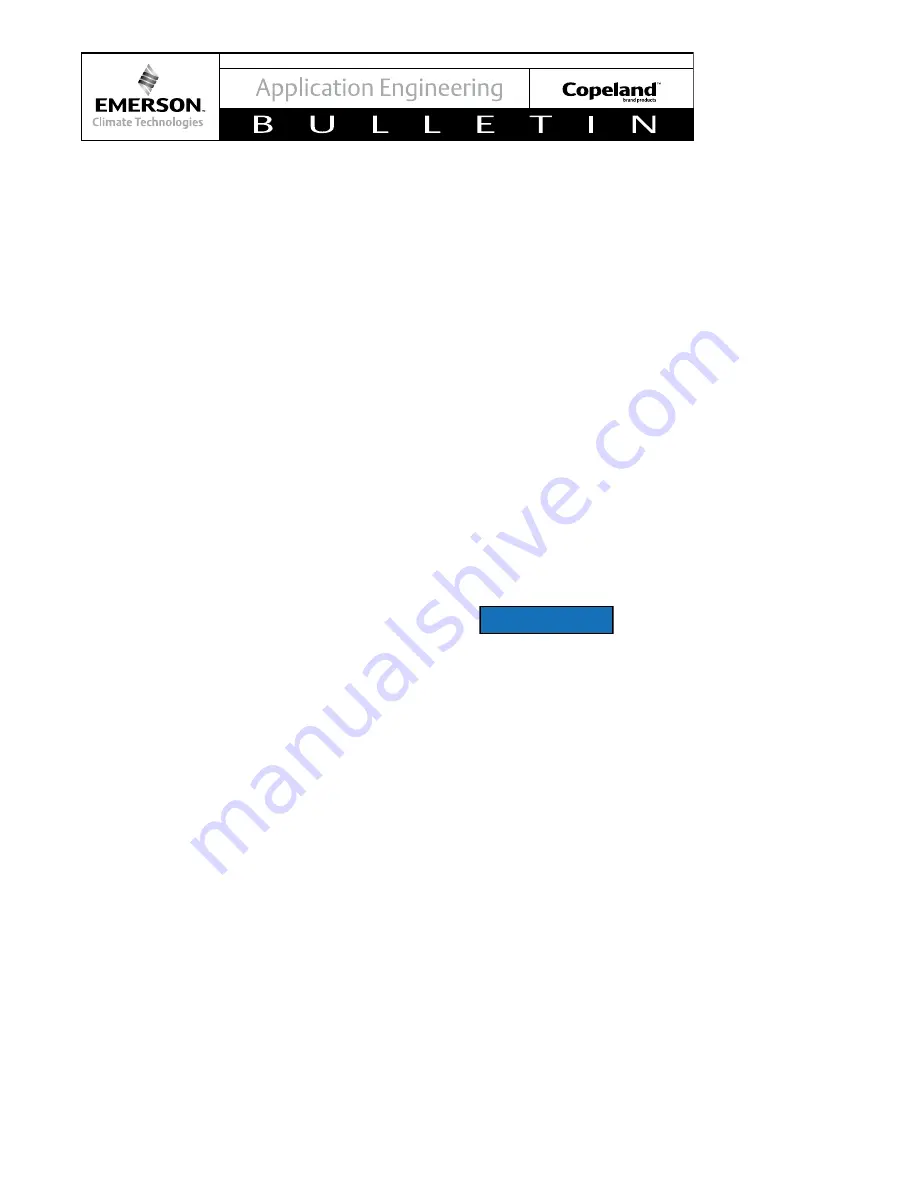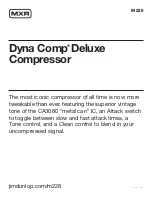
10
© 2016 Emerson Climate Technologies, Inc.
AE4-1303 R15
Power Factor Correction
If power factor correction is necessary in the end-use
application, please see
AE9-1249
for more information
on this topic.
Deep Vacuum Operation
Copeland Scroll compressors incorporate internal low
vacuum protection and will stop pumping (unload) when
the pressure ratio exceeds approximately 10:1. There
is an audible increase in sound when the scrolls start
unloading.
CAUTION! Copeland Scroll compressors (as with
any refrigerant compressor) should never be used
to evacuate a refrigeration or air conditioning
system.
The scroll compressor can be used to pump
down refrigerant in a unit as long as the pressures
remain within the operating envelope shown in
Figure 2.
Prolonged operation at low suction pressures will result
in overheating of the scrolls and permanent damage to
the scroll tips, drive bearing and internal seal. See
AE24-
1105
for proper system evacuation procedures.
Manifolded Compressors
Tandem compressor assemblies are available for
purchase from Emerson. In lieu of purchasing the
assembled tandem, the OEM can choose to purchase
the manifold-ready compressor and perform the
assembly in their factory. All of the ZP*KC and ZR*KC
compressors are available for manifolding with another
compressor in this compressor family. Manifold-
ready compressors are designated with a -4XX bill of
material number at the end of the model number (e.g.
ZP120KCE-TFD-422). Drawings of tandem and trio
compressor assemblies are available from Emerson
Climate Technologies by contacting your Application
Engineer.
NOTICE
Customers who choose to design
and build their own manifolds for tandem and trio
compressor assemblies are ultimately responsible
for the reliability of those manifold sets.
The suction manifold is close to a symmetrical layout
with the design intent of equal pressure drop to each
compressor. A straight length of pipe is connected to
the suction manifold "T" connection to serve as a flow
straightener to make the flow as uniform as possible.
The discharge manifold is the less critical of the two
manifolds in terms of pressure drop. Low pipe stress
and reliability are its critical design characteristics.
Two different oil balancing techniques are used with
tandems in this family of compressors – two-phase
tandem line (TPTL) and oil equalization line (OEL).
For trio assemblies, only the TPTL design has been
qualified. The TPTL design is a larger diameter pipe
connecting the oil sumps of the individual compressors
allowing both gas and oil to flow between the
compressors at the same time. To install the TPTL, the
individual sight-glasses on each compressor must be
removed to allow the TPTL to screw on to the sight-glass
fitting on the compressors. A sight-glass is installed on
the TPTL to view the presence of oil (
see Figure 9
).
The OEL design is a 3/8" (10mm) copper tube
connecting the oil sumps of the individual compressors
allowing the flow of oil between the compressor sumps.
To install the OEL, the oil drain Schrader fitting on each
compressor must be removed to expose the stub tube
fitting for a brazed connection (see
Tandem Assembly
section). The OEL has an oil drain Schrader fitting on
the 3/8" OEL tube for adding/removing oil (
see Figure
9
). The OEL design allows the individual oil levels in
each compressor to be viewed, which isn't possible
with the TPTL.
Manifolded Applications
NOTICE
Manifolded compressor designs employ a passive
oil management system. All system designs must
be tested by the OEM to ensure that the passive
design will provide adequate oil balancing
between the compressors in the manifolded set
under all operating conditions. If inadequate oil
balancing can't be demonstrated, an active oil
management system should be considered.
Manifolded compressors follow the same application
guidelines as single compressors outlined in this bulletin.
The refrigerant charge limit for tandem compressors is
shown in
Table 5
. A tandem circuit with a charge over
this limit must have crankcase heaters applied to both
compressors.
Oil levels in the individual sight-glasses will vary,
depending on whether one or more compressors in the
manifolded set are operating and if the manifolded set
is made up of equal or unequal compressor capacities.
Because of the unequal oil levels that can exist, oil levels
should be viewed with the compressors off to allow the
oil level to stabilize between the compressor sumps. With
the compressors off, oil should be visible in the individual











































